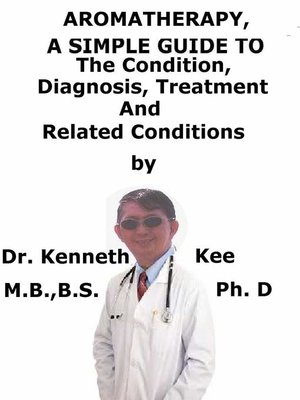Aromatherapy, a Simple Guide to the Condition, and Its Therapeutic Actions, and Related Conditions
ebook
By Kenneth Kee

Sign up to save your library
With an OverDrive account, you can save your favorite libraries for at-a-glance information about availability. Find out more about OverDrive accounts.
Find this title in Libby, the library reading app by OverDrive.



Search for a digital library with this title
Title found at these libraries:
| Library Name | Distance |
|---|---|
| Loading... |
This book describes Aromatherapy, Its Therapeutic Actions and Related Diseases
Aromatherapy is alternative form of treatment using essential oils from plants for healing.
The oils can be inhaled or massaged into the skin.
Aromatherapy uses essential oils to improve both physical and emotional wellbeing
Aromatherapy is a complementary therapy – something that is used alongside medical treatment.
Plant oils have been utilized as treatment for thousands of years.
Aromatherapy is widely available.
Some aromatherapists practice at home, while others provide treatments in sports centers and beauty clinics.
Aromatherapy is also available in some hospitals, care homes and the doctor surgeries.
It may differ from what's described here as it will be designed to meet the individual needs.
Essences secrete a unique fragrance when plants are crushed.
1. Lavender oil and
2. Rosemary oil.
The patient can absorb some essential oils through the skin, or they can have an effect on the patient through the sense of smell.
History of aromatherapy Essential oils have been used for treatment for thousands of years by the ancient Chinese, Indians, Egyptians, Greeks, and Romans.
Essential oils were often used for spiritual, hygienic and therapeutic purposes.
The healing properties of lavender oil were discovered by a French chemist when he applied it to a burn on his hand caused by an explosion in his laboratory.
He then started to analyze the chemical properties of essential oils and how they can be used to treat burns, skin infections, gangrene, and wounds in soldiers.
Uses of Aromatherapy
When the patient smells essential oils, it stimulates the olfactory system.
This is the part of the brain that's connected to smell.
Some research suggests that certain essential oils may have an effect on the mood, which can make the patient feel relaxed or stimulated.
The specialist massage often used to apply oils to the skin is also likely to have a relaxing effect.
Action of Aromatherapy When the patient breathes in the essential oil through the nose, researchers believe that they stimulate parts of the brain and influence physical, emotional, and mental health. 1. Lavender can stimulate the activity of brain cells in the amygdala in the same way some sedative medications work. Some molecules from essential oils may intermingle in the blood with hormones or enzymes. Aromatherapy massage allows the skin to absorb essential oils and also the nose to breathe them in. Only professional aroma therapists, nurses, physical therapists, pharmacists, and registered massage therapists can provide topical or inhaled aromatherapy treatment. Effects of treatment of Aromatherapy
Aromatherapy is used in health spas to hospitals to treat a variety of conditions.
It has been known to
1. Relieve pain,
2. Improve mood,
3. Promote a sense of relaxation
There are some of the ways that essential oils are used.
Oils can be diluted with carrier oil (such as almond or black seed oil) and massaged into the skin.
The patient can add a few drops of oil to warm bath water.
The patient can add oils to un-perfumed creams, such as moisturizer.
The patient can breathe in (inhale) some oils.
The patient can add oils to an aromatherapy diffuser or vaporizer.
Certain essential oils are not appropriate for everyone, especially if the patient have:
1.Epilepsy
2.Diabetes
3.High blood pressure
4.Asthma
5.Sensitive skin
6.Allergies
7.Some types of cancer
Aromatherapy can induce side effects, such as
1.Rash,







